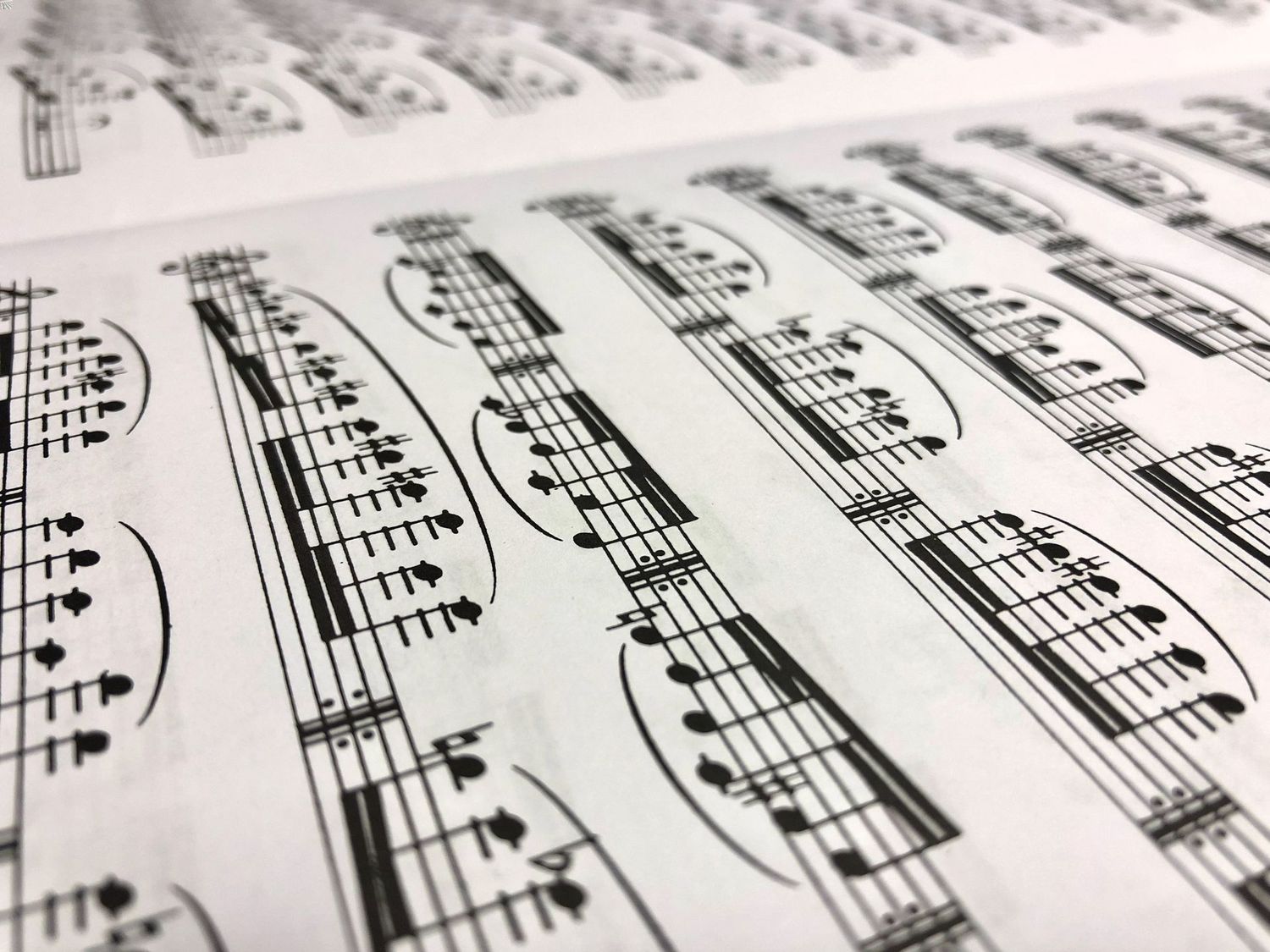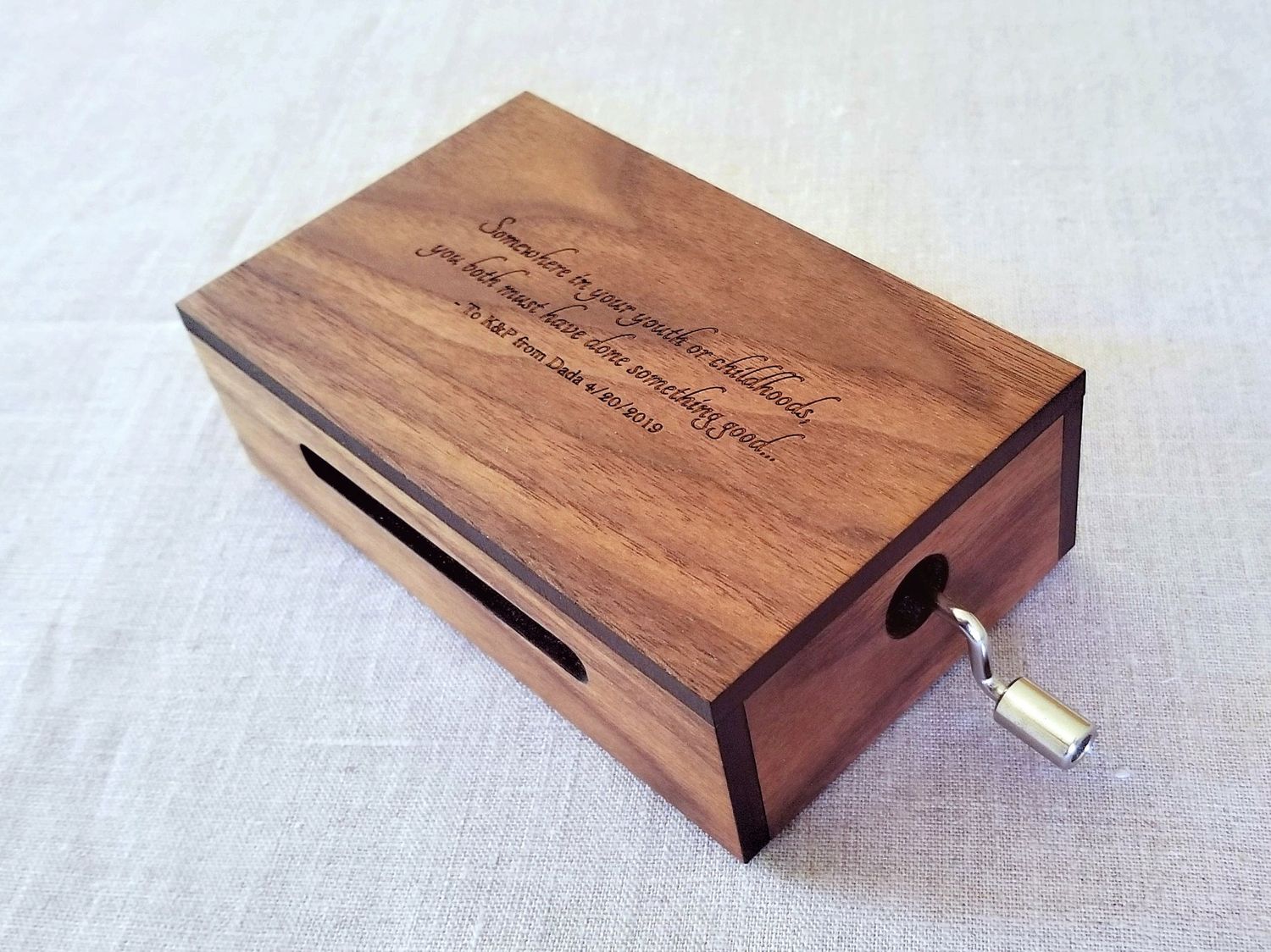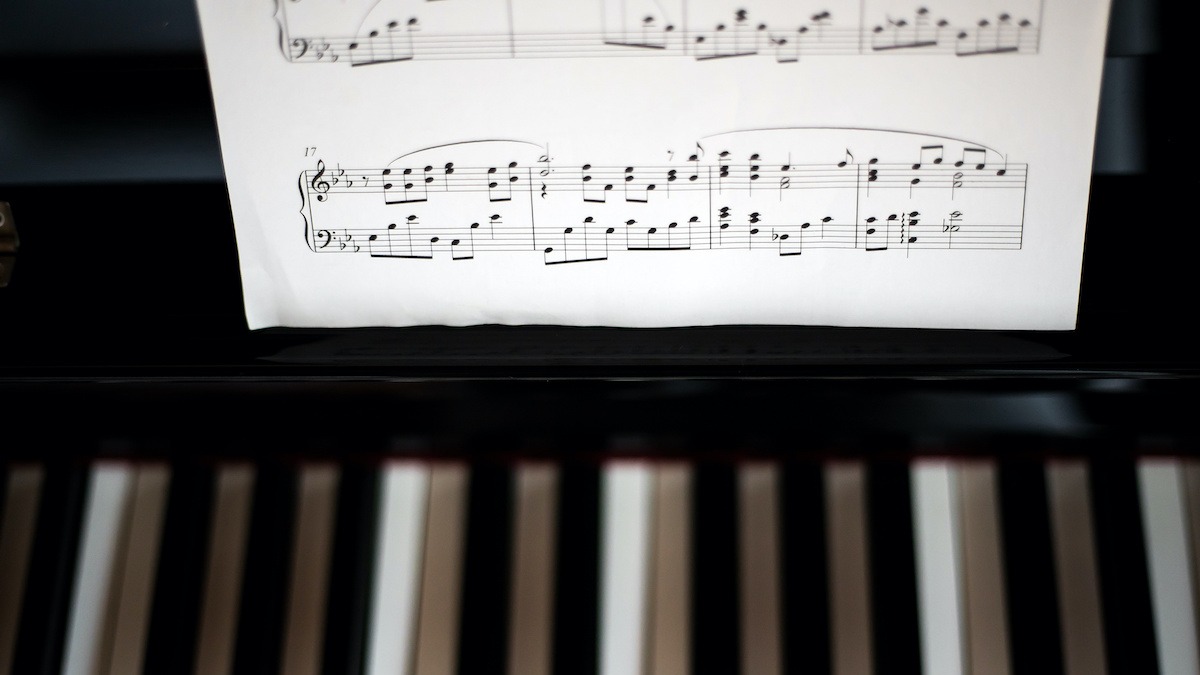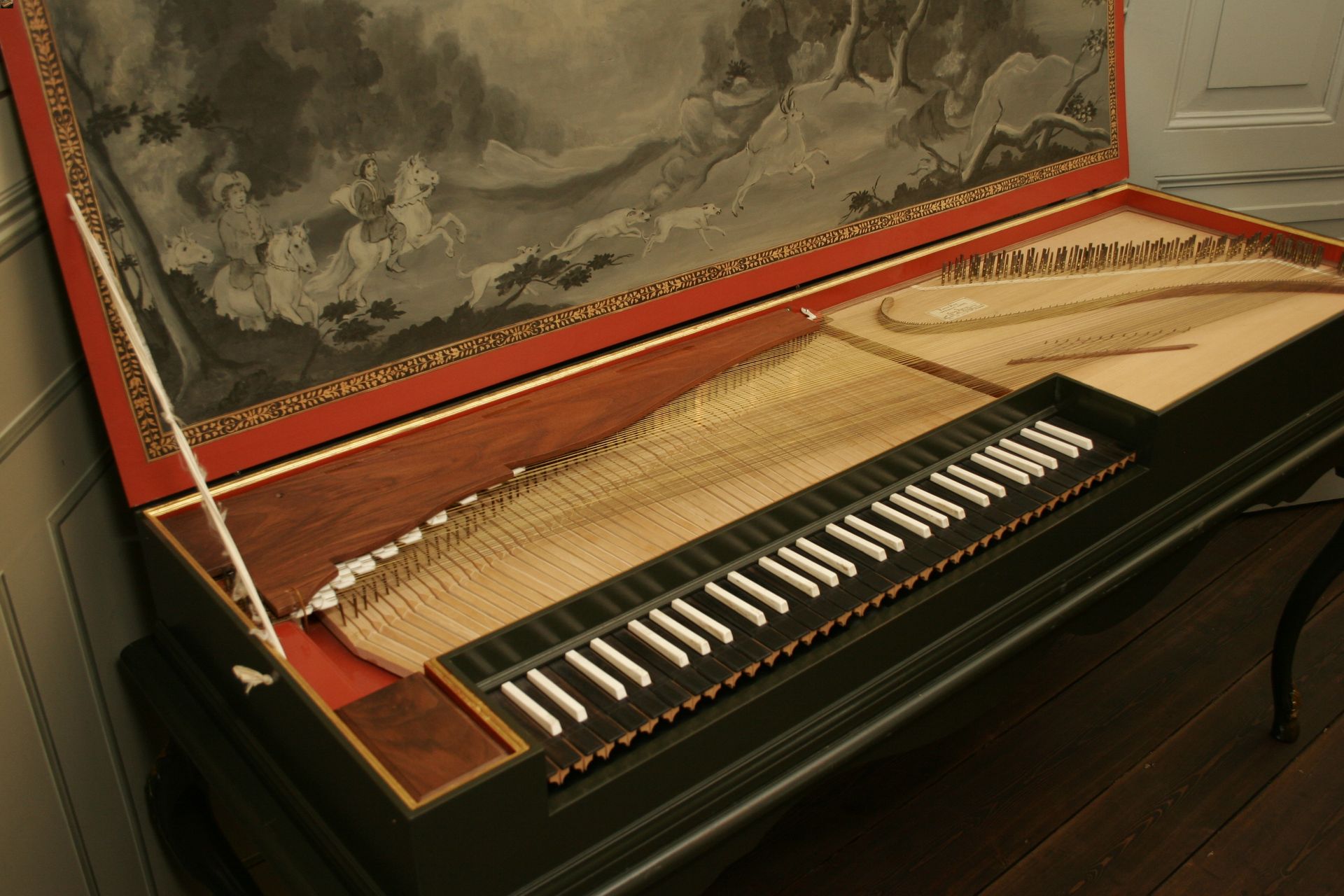Home>Devices & Equipment>Music Box>What Is The Mechanism In A Music Box Called


Music Box
What Is The Mechanism In A Music Box Called
Published: January 11, 2024
Learn about the intricate mechanism in a music box, also known as a music box movement. Discover how it produces enchanting melodies.
(Many of the links in this article redirect to a specific reviewed product. Your purchase of these products through affiliate links helps to generate commission for AudioLover.com, at no extra cost. Learn more)
Table of Contents
Introduction
Music boxes have captured the hearts of people for centuries, enchanting listeners with their whimsical melodies and intricate mechanisms. These charming devices, often seen as collector’s items or cherished heirlooms, have a fascinating history and a unique mechanism that brings them to life.
Invented in the 18th century, music boxes quickly became popular as a source of entertainment and a symbol of refinement. They were initially crafted for royalty and the upper class, but as their popularity grew, they became more accessible to the general public.
Music boxes are not only admired for their musical capabilities but also for their craftsmanship and intricate designs. They come in various shapes and sizes, featuring ornate cases made from materials such as wood, metal, or glass. These aesthetically pleasing boxes serve not only as musical instruments but also as beautiful pieces of art.
The heart and soul of a music box lie in its mechanism. This ingenious invention comprises a series of gears, pins, and rotating cylinders or discs that work harmoniously to produce melodious tunes.
In this article, we will delve into the mesmerizing world of music boxes, exploring their history, examining the components of their mechanisms, and uncovering the secrets behind the enchanting melodies they create. Join us on this captivating journey as we unravel the mysteries of the music box mechanism.
History of Music Boxes
The origins of music boxes can be traced back to the late 18th century in Switzerland, where they were initially developed as luxury items for the aristocracy. Swiss watchmakers, renowned for their precision and craftsmanship, played a significant role in the creation of these exquisite musical devices.
Early music boxes were simple, consisting of a metal cylinder that housed tiny pins of varying lengths. These pins would pluck the teeth of a metal comb, producing musical notes. The melody was determined by the arrangement of the pins on the cylinder. These early versions were quite limited in terms of the number of notes they could produce, often playing only a single tune.
Over time, advancements in technology led to the development of more complex music boxes. In the early 19th century, the invention of the pinned cylinder, where a larger number of pins could be arranged in multiple rows, allowed for the creation of more intricate melodies. This innovation marked a pivotal moment in the history of music boxes, as it paved the way for further improvements and musical possibilities.
During the Victorian era, music boxes became highly fashionable and were produced in larger quantities for a wider audience. The demand for these charming devices led to the proliferation of music box manufacturing companies across Europe and the United States.
In the late 19th century, a new type of music box mechanism emerged—the disc mechanism. Instead of using a cylinder with pins, these music boxes featured interchangeable discs with precisely placed bumps that would activate the teeth of the comb. The disc mechanism allowed for a greater variety of songs to be played, as different discs could be inserted into the music box to produce different melodies. This innovation further popularized music boxes and cemented their status as coveted collector’s items.
Today, music boxes continue to captivate and enchant people of all ages. While the popularity of music boxes has waxed and waned throughout the years, their timeless charm and melodic allure remain unchanged. They are cherished as nostalgic keepsakes, sentimental gifts, and tokens of appreciation, preserving the legacy of a bygone era and reminding us of the enduring magic of music.
Components of a Music Box
Music boxes may appear to be magical creations, but in reality, they are intricate machines that rely on a combination of carefully crafted components to produce their delightful melodies. Let’s take a closer look at the essential parts that make up a music box.
1. Case: The case of a music box serves as both a protective housing and a decorative element. It is typically made from materials such as wood, metal, or glass and often features intricate designs or engravings that add to its aesthetic appeal.
2. Mechanism: The mechanism is the heart of the music box, responsible for producing the sound. It consists of a series of gears, levers, and springs that work together to activate the musical elements and create the desired melodies.
3. Cylinder or Disc: The cylinder or disc is a key component in the mechanism and determines the specific tune that the music box will play. In cylinder mechanisms, a metal barrel or cylinder with pins or bumps is used to pluck the teeth of a metal comb. Disc mechanisms, on the other hand, utilize interchangeable metal discs with bumps or pins that engage the comb teeth.
4. Comb: The comb is a metal strip with numerous teeth of varying lengths that vibrate when activated by the pins or bumps on the cylinder or disc. The vibrations produced by the comb teeth create the musical notes that form the melody.
5. Pins and Bumps: In cylinder mechanisms, pins are positioned on the cylinder, while bumps are present on the discs in disc mechanisms. These pins or bumps determine which teeth of the comb will be plucked, thus producing the specific sequence of musical notes.
6. Spring: The spring serves as the source of power for the music box. It is wound up by turning a key or winding knob, and as it unwinds, it releases energy to drive the gears and rotate the cylinder or disc.
7. Flywheel: The flywheel is a spinning wheel connected to the winding mechanism of the music box. It helps regulate the speed and tension of the unwinding spring, ensuring a steady and consistent tempo of the music.
8. Governor: The governor is a device that controls the speed of the music box by regulating the flow of air. It consists of a rotating fan or vane that opens and closes air vents, allowing the music to play at the desired tempo.
These are the primary components that work in harmony to produce the mesmerizing melodies of a music box. Each part plays a vital role in the overall mechanism, creating a symphony of sound and bringing joy to all who listen.
The Mechanism: How It Works
While music boxes may seem like magical objects, their mechanism operates on a fascinating and intricate system. Understanding how the mechanism works can deepen our appreciation for the craftsmanship and ingenuity behind these delightful devices.
At the core of the music box mechanism is a cylindrical drum or a round disc, both adorned with pins or bumps. These pins or bumps are strategically placed in a pattern that corresponds to specific musical notes. As the mechanism is set in motion, either by winding a spring or activating a lever, the drum or disc begins to rotate.
In a cylinder mechanism, as the cylinder rotates, the pins on its surface interact with a comb, which consists of a series of metal teeth of varying lengths. Each pin plucks a tooth on the comb, producing a specific musical note. The arrangement and length of the pins determine the sequence and harmony of the notes, creating a delightful melody.
In a disc mechanism, the rotating disc with its bumps engages with the comb teeth in a similar fashion. As the disc turns, the bumps push against the comb teeth, causing them to vibrate and produce musical notes. The pattern and placement of the bumps determine the melody.
To power the music box, a tightly wound spring is released, gradually unwinding and providing energy for the mechanism. The spring transfers its energy to a series of gears and levers, which amplify and regulate the motion of the rotating drum or disc.
As the drum or disc continues to rotate, the pins or bumps pluck the comb teeth, generating musical notes. The vibration of the comb teeth produces distinctive sounds, creating the beautiful melodies that bring joy to our ears.
Aside from the pins and bumps, other components such as a flywheel and a governor are crucial in controlling the speed and tension of the unwinding spring. They help maintain a consistent tempo and regulate the airflow within the music box, ensuring optimal sound quality.
The intricacies of the music box mechanism require skillful craftsmanship and precise engineering. Each component must be carefully designed and aligned to produce the desired melody. Whether it’s a cylinder or disc mechanism, the magic lies in the harmonious interaction between the pins or bumps, the comb teeth, and the unwinding spring.
As you wind up a music box and listen to its enchanting melody, take a moment to appreciate the intricate workings of the mechanism inside. It’s a testament to the artistry and engineering that has brought music boxes to life for centuries, captivating audiences young and old with their timeless charm.
Types of Music Box Mechanisms
Music boxes come in various types and styles, each showcasing a different mechanism that produces its unique sound and melodies. Let’s explore some of the most common types of music box mechanisms:
1. Cylinder Mechanism: The cylinder mechanism is one of the oldest and most traditional types of music box mechanisms. It features a metal cylinder with pins positioned along its length. As the cylinder rotates, these pins pluck the metal teeth of a comb, creating the musical notes. Cylinder mechanisms are known for their nostalgic charm and are often found in vintage and antique music boxes.
2. Disc Mechanism: The disc mechanism, introduced in the late 19th century, revolutionized the music box industry. Instead of a cylinder, this mechanism utilizes interchangeable metal discs with precisely placed bumps or pins. As the disc rotates, the bumps or pins interact with the comb teeth, producing the desired melody. Disc mechanisms offer a wider repertoire of tunes, as different discs can be used with the same music box.
3. Comb Mechanism: The comb mechanism refers to the metal comb with teeth that vibrate to produce the musical notes. While both cylinder and disc mechanisms employ a comb, the comb mechanism focuses specifically on the vibrating teeth. The design and arrangement of these teeth contribute to the distinctive sound and quality of the music produced by the music box.
4. Reuge Mechanism: Reuge is a renowned brand that specializes in crafting high-quality music box mechanisms. Reuge mechanisms are known for their precision and exquisite craftsmanship. They utilize intricate cylinder or disc mechanisms, often incorporating additional features such as multiple melodies, interchangeable cylinders, or automatic changeovers. Reuge music boxes are considered luxury items and are highly prized by collectors.
5. Orpheus Mechanism: Orpheus is another esteemed brand in the world of music boxes, known for its exceptional craftsmanship and musical intricacy. Orpheus mechanisms are meticulously handcrafted and can often play intricate melodies with a larger number of notes. These mechanisms are favored by serious enthusiasts and discerning collectors.
These are just a few examples of the diverse types of music box mechanisms available. Each type offers a unique musical experience, from the nostalgia of cylinder mechanisms to the versatility of disc mechanisms. Whether you appreciate the classical charm of antique music boxes or the modern sophistication of luxury brands, there’s a music box mechanism to suit every taste and preference.
Cylinder Mechanism
The cylinder mechanism is one of the most traditional and iconic types of music box mechanisms. It is characterized by a rotating metal cylinder that is adorned with pins on its surface. These pins are strategically positioned to engage with the teeth of a comb, creating the melodic notes that form the music.
The cylinder itself is typically made of brass or steel and can vary in size and length depending on the specific music box. The pins on the cylinder are carefully placed to correspond to specific musical notes, following a predetermined pattern. As the cylinder rotates, these pins interact with the comb, causing the teeth to vibrate and emit musical tones. The length of each tooth determines the pitch of the note produced, allowing for a range of harmonious melodies.
The cylinder mechanism, though simple in design, offers a nostalgic and timeless appeal. Its graceful rotation and delicate plucking of the comb teeth create a charming and soothing melody that has captivated listeners for centuries.
One of the distinctive features of the cylinder mechanism is that it often plays a single tune consecutively. The length of the cylinder determines the duration of the melody, and once the tune is completed, the cylinder must be manually reset or rewound to play it again. This repetitive nature adds to the enchanting experience of listening to a music box with a cylinder mechanism, as it encourages the appreciation of a single melody in its entirety.
Cylinder mechanisms can be found in a wide range of music boxes, from antique and vintage designs to modern reproductions. They are often crafted with intricate casings made of wood, metal, or glass, enhancing their visual appeal and making them cherished decorative pieces.
While the cylinder mechanism may not offer the versatility of playing multiple tunes like some other mechanisms, it has a distinct charm and simplicity that make it a favorite amongst music box enthusiasts. Its familiarity and classic design are a testament to the enduring fascination and admiration for music boxes throughout history.
Whether you come across a vintage music box with a cylinder mechanism or choose to add a replica to your collection, the gentle melodies produced by this mechanism are sure to fill your heart with nostalgia and evoke a sense of tranquility.
Disc Mechanism
The disc mechanism is a popular type of music box mechanism that emerged in the late 19th century and revolutionized the world of music boxes. It features a rotating metal disc adorned with precisely placed bumps or pins that interact with a comb, creating the delightful melodies that music boxes are known for.
Unlike the cylinder mechanism, which typically plays a single tune, the disc mechanism offers a greater variety of music. This is achieved by using interchangeable discs with different arrangements of bumps or pins. Each disc contains a specific set of notes, allowing for the playing of multiple tunes on a single music box.
The design of the disc mechanism allows for easier customization and adaptability. Music box enthusiasts can collect and swap discs, creating a selection of tunes to suit their preferences. This versatility has contributed to the enduring popularity of disc mechanisms.
The metal discs used in disc mechanisms are meticulously crafted, with bumps or pins positioned at specific intervals and heights. As the disc rotates, these bumps or pins engage with the comb, causing the teeth to vibrate and produce musical notes. The arrangement of bumps or pins on the disc determines both the sequence of the notes and the melody being played.
Disc mechanisms often offer a wider range of melodies compared to other types of music box mechanisms. Some music boxes with disc mechanisms can play several tunes on a single disc, even including complex musical compositions with a large number of notes. This flexibility in musical repertoire makes disc mechanisms a popular choice for music box collectors and enthusiasts.
Another advantage of the disc mechanism is the ease of use. Changing the disc in a music box is a simple process: the current disc is removed, and a new one with a different selection of tunes is inserted. This allows for a seamless transition between melodies and offers a delightful experience for the listener.
Disc mechanisms are widely used in both vintage and modern music boxes. Whether housed in a regal wooden cabinet or encased in a sleek contemporary design, music boxes with disc mechanisms continue to captivate audiences with their versatility and the joy they bring through their melodic offerings.
From classical compositions to popular tunes, the disc mechanism provides an avenue for music box enthusiasts to enjoy a plethora of melodies and embrace the beauty of music in their own unique way. Its adaptability and ability to evoke different emotions through its varied selection of tunes make the disc mechanism a cherished component of music boxes around the world.
Comb Mechanism
The comb mechanism is an integral part of music boxes, serving as the foundation for producing the enchanting melodies that captivate our ears. Consisting of a metal strip with carefully crafted teeth, the comb plays a vital role in creating the musical notes that define the unique character of each music box.
The comb in a music box is usually made of steel or brass and is meticulously designed to produce specific pitches when activated. Each tooth on the comb is precisely shaped and positioned to create a particular note when plucked by the pins or bumps of the mechanism.
When the music box’s mechanism, whether it is a cylinder or disc, is set in motion, the pins or bumps engage with the teeth of the comb, causing them to vibrate. These vibrations produce musical tones as the teeth traverse back and forth, capturing the beautiful nuances of the melodies.
The number and arrangement of teeth on the comb determine the complexity and range of the music that the music box can produce. Music boxes with a larger comb and more teeth can create a broader spectrum of notes, enabling the rendition of intricate melodies with multiple layers of harmony.
One noteworthy aspect of the comb mechanism is the artistry involved in its creation. Each tooth of the comb must be expertly shaped, filed, and tuned to ensure that it produces the desired pitch and resonance. Craftsmen spend countless hours perfecting the teeth, carefully adjusting and fine-tuning them to achieve the precise musical tones.
The sound produced by the comb mechanism is often described as delicate and bell-like, evoking a sense of nostalgia and enchantment. The vibrations of the comb teeth resonate within the music box’s case, creating a mesmerizing and distinct timbre that is characteristic of music boxes.
Comb mechanisms can be found in a variety of music boxes, from small handheld versions to larger, ornate designs. Regardless of their size or style, the comb mechanism is at the heart of the music box, bringing the melodies to life and spreading joy with each delicate pluck of the teeth.
As you listen to the gentle melodies of a music box, take a moment to appreciate the craftsmanship and artistry of the comb mechanism. It is the culmination of meticulous design and skilled craftsmanship, transforming simple metal teeth into magical notes that transport us to a world of musical delight.
The Function of Pins and Teeth
Pins and teeth play a crucial role in music box mechanisms, serving as the key elements that produce the beautiful melodies we associate with these enchanting devices. Their intricate design and strategic placement allow for precise control over the sequence of musical notes and harmonies.
In cylinder mechanisms, the pins are located on a rotating metal cylinder, while in disc mechanisms, they are positioned on interchangeable discs. These pins are carefully arranged in patterns that correspond to specific musical notes. As the cylinder or disc rotates, the pins engage with the teeth of the comb, triggering the production of sound.
The teeth of the comb are metal strips that are precisely shaped and positioned to vibrate at specific pitches when plucked by the pins. The vibrations of the teeth create the musical notes that form the melody. Each tooth represents a specific pitch, and the order in which they are plucked determines the sequence of the melody.
The length and positioning of the pins and teeth are carefully calibrated to ensure accurate and pleasing musical tones. The longer the tooth, the lower the pitch it produces, while shorter teeth produce higher notes. By manipulating the length and placement of the pins and teeth, music box makers can achieve a wide range of melodic possibilities.
The pins and teeth work in perfect synchronization, offering precise control over the timing and sequence of the notes. The pins pluck the teeth at specific moments, creating a harmonious progression of sounds to compose the desired melody.
One of the fascinating aspects of pins and teeth is their versatility. By altering the arrangement of pins or discs and adjusting the shape or length of the teeth, music box manufacturers can create different melodies and even replicate famous compositions. This flexibility allows for endless variations and customization, making each music box unique.
Additionally, some advanced music box mechanisms incorporate additional features such as dynamic expression or chords. The addition of special pins or extra sets of teeth enables these mechanisms to produce expressive nuances or harmonies that enhance the musical experience.
Whether you appreciate the classic charm of a cylinder mechanism or the versatility of a disc mechanism, pins and teeth are at the core of the music box’s magical melodies. Their precise construction and interaction give life to the captivating tunes that continue to captivate and delight us.
The next time you listen to the melodic notes of a music box, take a moment to marvel at the intricate interplay between the pins and teeth, creating a symphony that brings joy and nostalgia to your heart.
Sound Production in a Music Box
Sound production in a music box is a fascinating process that involves the harmonious interplay of various components. Combining precision engineering with artistic craftsmanship, music boxes produce captivating melodies that enchant and delight.
The primary components involved in sound production are the cylinder or disc, the pins or bumps on these rotating elements, and the comb with its vibrating teeth. As the cylinder or disc rotates, the pins or bumps interact with the comb teeth, causing them to vibrate at specific pitches.
The vibrations of the comb teeth produce musical notes, and the sequence of these notes creates the melody. Each tooth on the comb represents a different pitch, with longer teeth producing lower notes and shorter teeth producing higher notes. The precise positioning and length of the teeth determine the musical scale and range of the music box.
The quality of sound produced by a music box is influenced by several factors. The materials used in constructing the comb and the body of the music box can impact the tone and resonance. Different types of combs, such as those made of steel or brass, may produce subtle variations in tonality and sound quality.
The design and arrangement of the pins or bumps on the cylinder or disc also contribute to the sound produced. The pattern and density of these pins or bumps directly correlate to the specific notes and melodies that the music box can play. Craftsmen meticulously layout the pins or bumps in a precise configuration to achieve the desired musical outcome.
The size and shape of the music box also play a role in the sound production. The resonance and volume of the melody can be influenced by the size and material of the music box’s case. Wood, metal, or glass cases may produce subtly different tones and amplification effects.
The exquisite craftsmanship and attention to detail throughout the construction process significantly impact the overall sound quality of the music box. From the precise shaping and tuning of the comb teeth to the accurate positioning of the pins or bumps, each component is carefully crafted to ensure optimal sound production.
While each music box may have its distinct sound, there is a charming and nostalgic quality that is common to them all. The delicate and bell-like tones produced by the vibrating comb teeth resonate within the music box’s case, creating a unique and captivating timbre that is instantly recognizable.
Whether it’s the simple melodies of a vintage cylinder music box or the complex arrangements played by a modern disc mechanism, the sound production in a music box is a testament to the passion, skill, and artistry of its creators. With each note and every melody, a music box takes us on a timeless journey filled with joy, nostalgia, and the enchantment of music.
Maintenance and Repair of Music Box Mechanisms
Proper maintenance and occasional repairs are essential for keeping a music box mechanism in optimal condition, ensuring its longevity and functionality. With the right care, you can enjoy the beautiful melodies of your music box for years to come. Here are some tips for maintaining and repairing music box mechanisms:
Regular Cleaning: Dust and dirt can accumulate inside a music box, affecting its performance and sound quality. To prevent this, gently clean the exterior and interior of the music box with a soft, dry cloth. Be careful not to apply excessive pressure or use abrasive cleaners that could damage the delicate components.
Oil and Lubrication: Over time, the moving parts of a music box may require lubrication to ensure smooth operation. Use a small amount of a high-quality clock oil or synthetic lubricant recommended for small mechanisms, and apply it sparingly to the gears and pivots. Avoid excess oil, as it can attract dust and impede the mechanism’s functioning.
Inspecting and Replacing Parts: Periodically inspect the pins, teeth, and other components of the music box mechanism for signs of wear or damage. If you notice broken or bent pins, missing teeth, or any other issues, it may be necessary to replace these parts. Consult a professional music box repair technician or specialist who has the expertise and knowledge to source and replace the necessary components.
Restoring Tarnished or Worn Surfaces: If the exterior surfaces of the music box have become tarnished or worn, you can consider refurbishing or restoring them. Consult a specialist who specializes in music box restoration to ensure proper care and treatment of the materials used in the music box’s casing.
Avoiding Extreme Temperature and Humidity: Music boxes should be kept in environments with moderate temperature and humidity levels. Extreme fluctuations in temperature and humidity can cause damage, warping of the components, or swelling of the wooden casing. Avoid placing the music box near direct sunlight, heaters, or areas prone to excessive moisture.
Qualified Repairs: If your music box requires more extensive repairs or restoration, it is advisable to seek the assistance of a professional. Professional music box repair technicians have the expertise to disassemble, repair, and reassemble the intricate mechanisms, ensuring proper functionality and preservation of the music box.
Remember, each music box is unique, and the specific maintenance and repair needs may vary. If you are unsure how to address a particular issue or if the music box is a valuable antique or heirloom, it is best to consult a professional with expertise in music boxes to ensure the appropriate care is taken.
By following these maintenance and repair guidelines, you can extend the life of your music box and continue to experience the joy and magic of its melodic offerings. With proper care and attention, your music box will provide you and future generations with countless moments of delight and nostalgia.
Conclusion
Music boxes have captivated hearts and minds for centuries, enchanting listeners with their beautiful melodies and intricate mechanisms. From the humble beginnings of cylinder mechanisms to the versatile disc mechanisms of today, music boxes have evolved while retaining their timeless charm.
The history of music boxes is a testament to human ingenuity and craftsmanship. These mesmerizing devices have transitioned from being cherished possessions of the aristocracy to becoming cherished heirlooms and collectibles for people around the world.
Understanding the components and mechanisms of a music box allows us to appreciate the artistry and engineering behind them. The cylinder mechanisms, with their nostalgic melodies and repetitive tunes, offer a glimpse into the past, while the disc mechanisms provide a wider range of melodies and a customizable musical experience.
The collaboration between pins, bumps, teeth, and combs produces the harmonious symphony that we associate with a music box. Each component is carefully crafted and calibrated to create the magical melodies that fill our hearts with joy and nostalgia.
Maintaining and repairing a music box ensures its longevity and preserves its melodic enchantment. Regular cleaning, proper lubrication, and occasional part replacements are essential to keep a music box mechanism in optimal condition.
Whether passed down through generations or newly acquired, a music box holds sentimental value and serves as a cherished treasure. Its melodies transport us to a world of nostalgia, evoking emotions and memories that make it more than just a musical instrument.
As we wind up a music box and listen to its delightful melody, it reminds us of simpler times and offers a respite from the hustle and bustle of modern life. The mesmerizing tunes created by the pins, bumps, and teeth transport us to a realm of beauty and serenity.
Music boxes continue to inspire awe and wonder, captivating hearts with their intricate mechanisms and ethereal melodies. Whether as decorative pieces, cherished heirlooms, or thoughtful gifts, these enchanting devices serve as a reminder of the enduring power of music to move and enchant us.
So, the next time you come across a music box, take a moment to appreciate its craftsmanship, marvel at the delicate interplay of its components, and let its melodies transport you to a place of beauty and tranquility.











